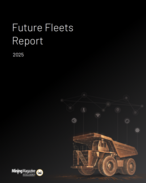All seven systems being tested at Consol Energy’s McElroy mine in Moundsville, West Virginia, enable either two-way communication or tracking and represent three different technologies, said Luzik. Testing is scheduled to begin in about two weeks.
“We will be testing wireless communications and tracking systems that incorporate three distinct technologies,” he said. These include ultra-wide band radar, a system that is wireless node-based using IEEE 802 protocols, and a low frequency and narrow band through the earth transmission.
Luzik noted that the agency’s current focus for testing is on those innovations that are developed and currently available for use: “We are focusing on wireless systems because of the concern of survivability of a wired infrastructure in the event of a mine disaster such as a fire, explosion, roof fall or inundation.”
He focused on the technologies at a mine safety public meeting this week in Washington, DC, moderating a discussion with agency colleague and presenter David Chirdon. Luzik said all of the technologies incorporate different types of technology yet are also similar in some ways.
“Two of the systems have both tracking and two-way voice communication capability, three systems are two-way voice communication, one system is designed for tracking and limited two-way communication [one way down and capability of yes/no digital response back up through the earth] and one system is strictly tracking but can also provide [two-way] data transmission,” he said, adding that the agency initially received over 80 proposals for systems.
Goals have been established to help the agency testing team determine which innovations have the best chance to be successful for the needs of the underground mining environment, Luzik said. The evaluation points include a determination of signal propagation, overburden penetration with regards to through-the-earth systems, determining the coverage area of the mine the system encompasses and the investigation of potential interference issues.
He added that, in the case of the tracking systems, accuracy would be another determination the field test team would look at.
Any one or more of the technologies being tested have the potential to change the face of mine safety and mine communication, a prospect Luzik said the agency is enthusiastic about.
“We are excited about the possibility of one or more of these systems proving to be an effective means to enable two-way emergency communication and tracking of miners who may be trapped underground in the event of a disaster,” he said.
He added that MSHA would maintain communication and support to those successful technologies. “MSHA technical support scientists and engineers will be working with [system] manufacturers that are favourably evaluated to develop strategies to enable them to meet our approval requirements.”
























